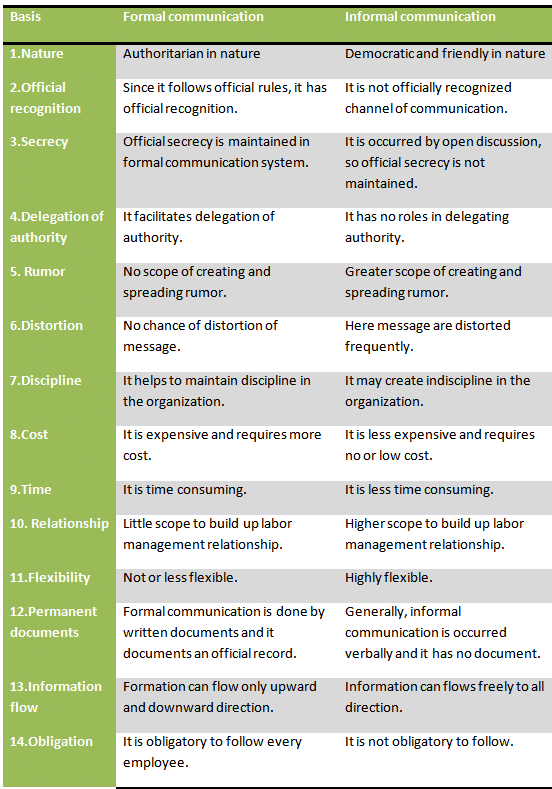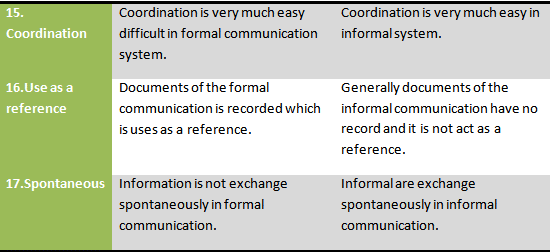Meaning of formal communication: When an organization communication occurs by following the prescribed or official or predetermined rules, policy and regulation of the organization is called formal communication. Formal communication is governed by the established chain of command. Internal information exchanged form one to another following the conventional rules. But this type of communication system may be used for both eternal and external purposes. Some important definitional communications are as follows:
According to Bartoal and Martin, “Formal communication refers to vertical and horizontal communication that flows path specified by the official hierarchical organizational structure and related task requirements.”
According to Bovee and his associates, “Formal communication is the flow of information that is dictated by the organization’s official structure.”
So, formal communication is the process of exchanging information between two or more person by following the prescribed or official rules, procedures, systems, formalities and chain of command in the organizational structure.
Difference between formal and informal communication: Formal communication is the process of exchanging information by following the prescribed or official rules, procedures, systems, formalities, chain of command etc. in the organizational structure.
On the other hand, informal communication is the process of spontaneous exchange of information among various people of different status in the organizational structure. The difference between formal and informal communication are as follows:

Features or characteristics of formal communication: The important features or characteristics of formal communication are as follows:
Well defined rules and regulations: Formal communication has well defined rules and regulations.
Bindings: Employees of the formal organization is bounded to follow formal rules and regulations.
Chain of command: Proper chain of command is followed by formal communication.
Delegation of authority: Authority is delegated by the superiors to the subordinates through this communication.
Use as a reference: Documents of the formal communication is recorded by the organization. S, these recorded documents are use as a source of the employees.
Recognition: Formal communication occurs among the employees of the organizational structure. So it has recognition.
Task related: All types of formal compunction within the employees should be task related.
Routine Communication: Generally formal communication is a routine communication of the employees.
Cooperation and co-ordination: Formal communication is a part of cooperation and coordination.
Status symbol: Formal communication of the employees shows the status symbol.
What is Formal Communication?

No comments:
Post a Comment